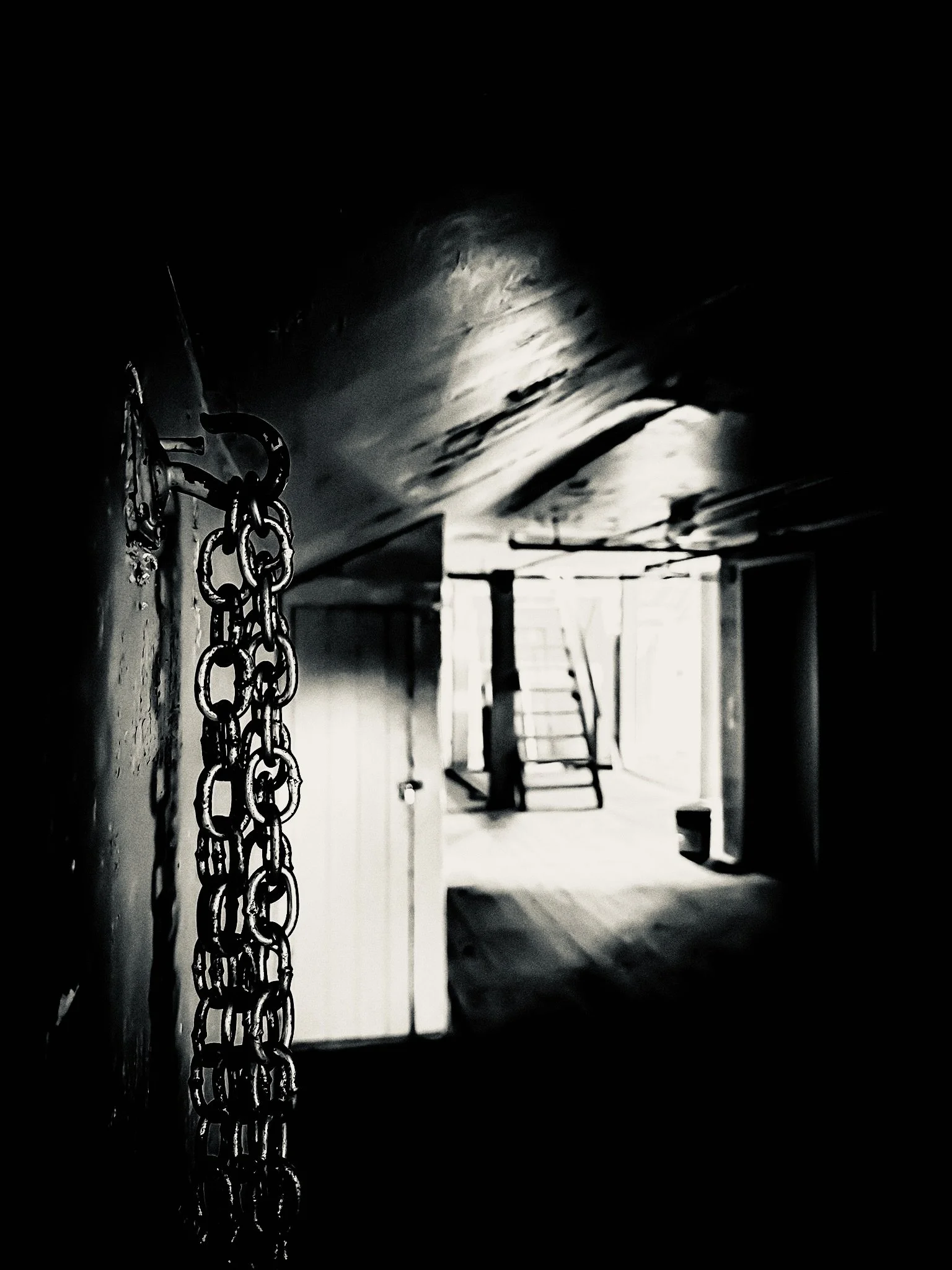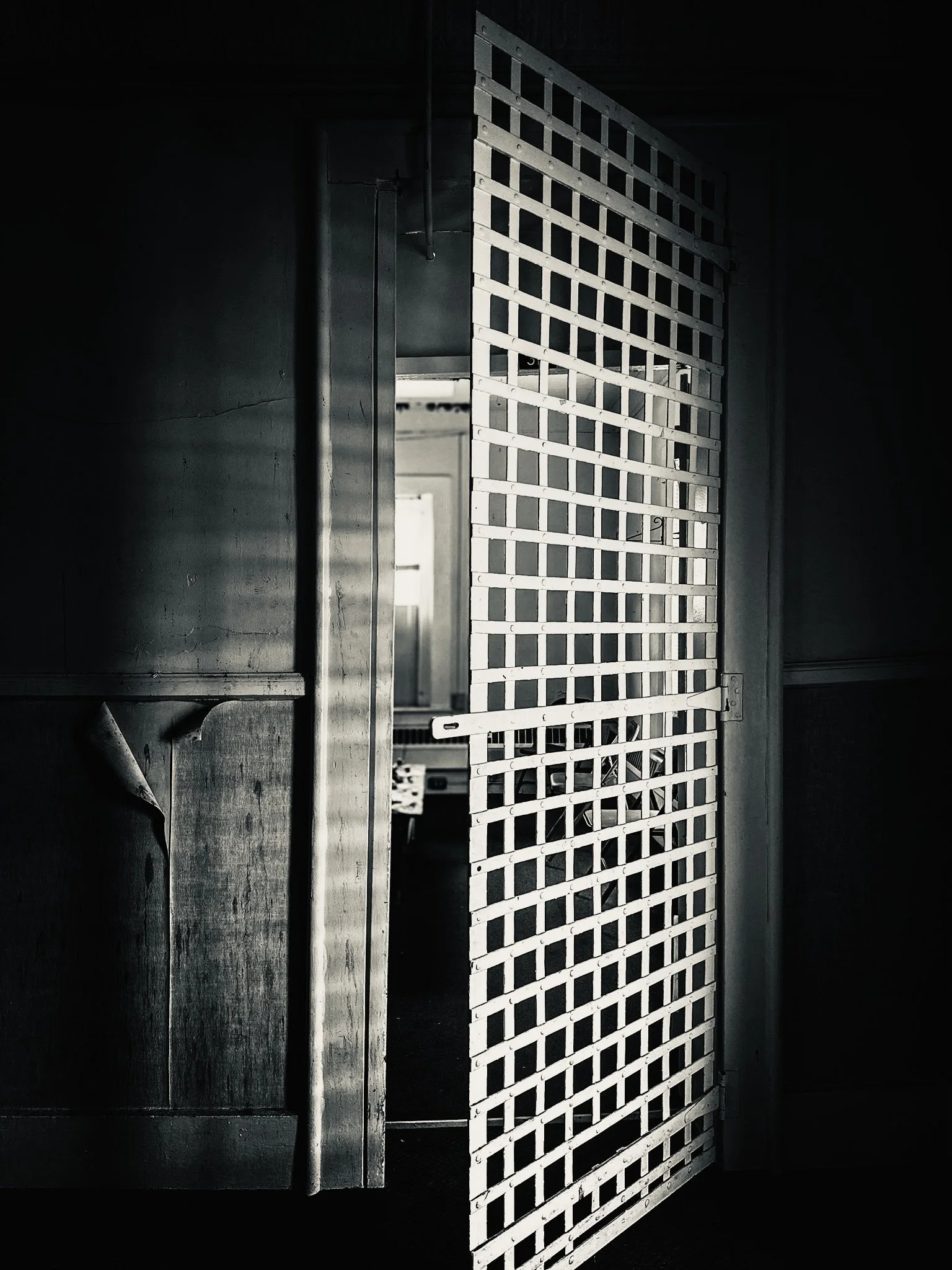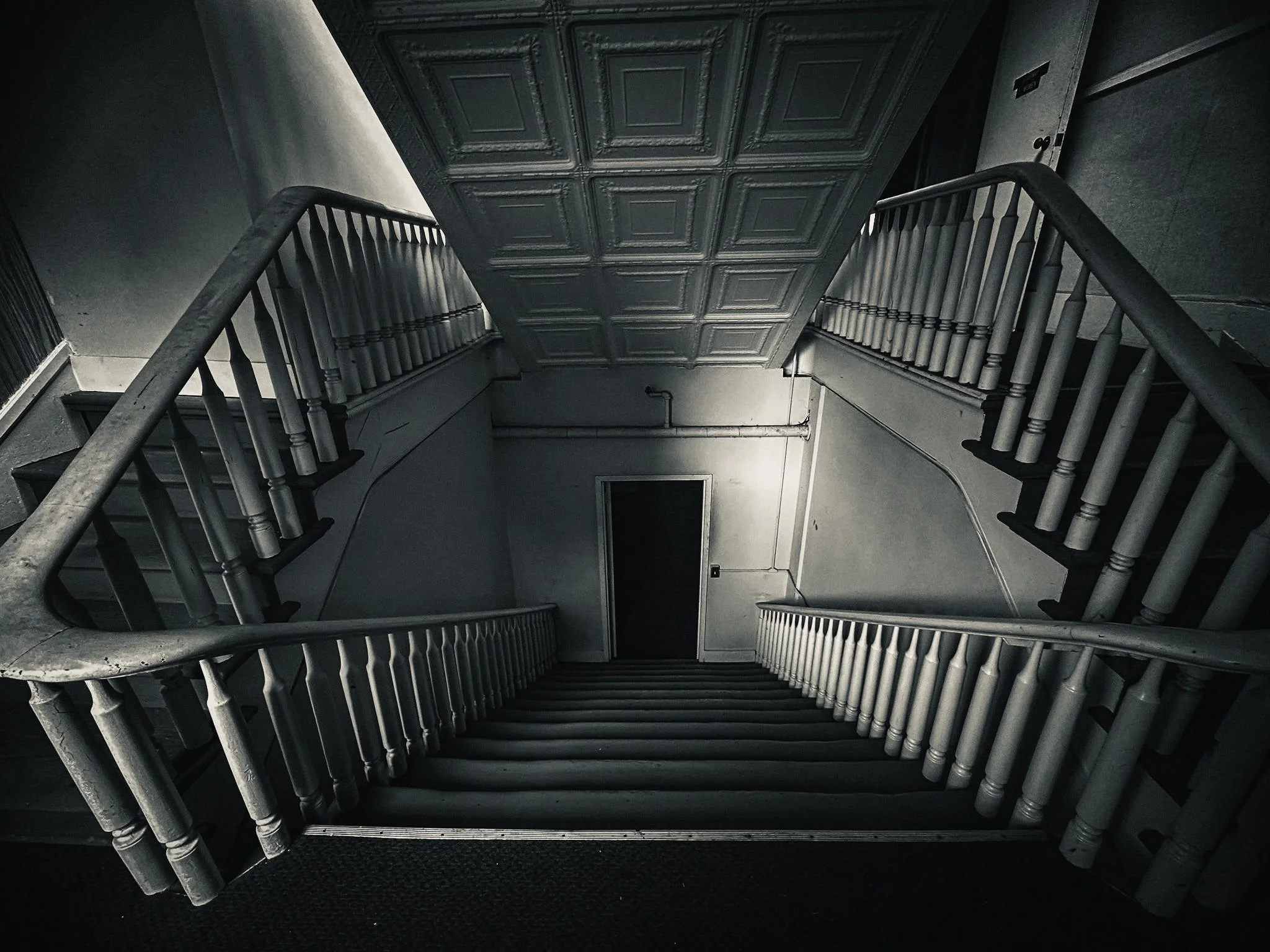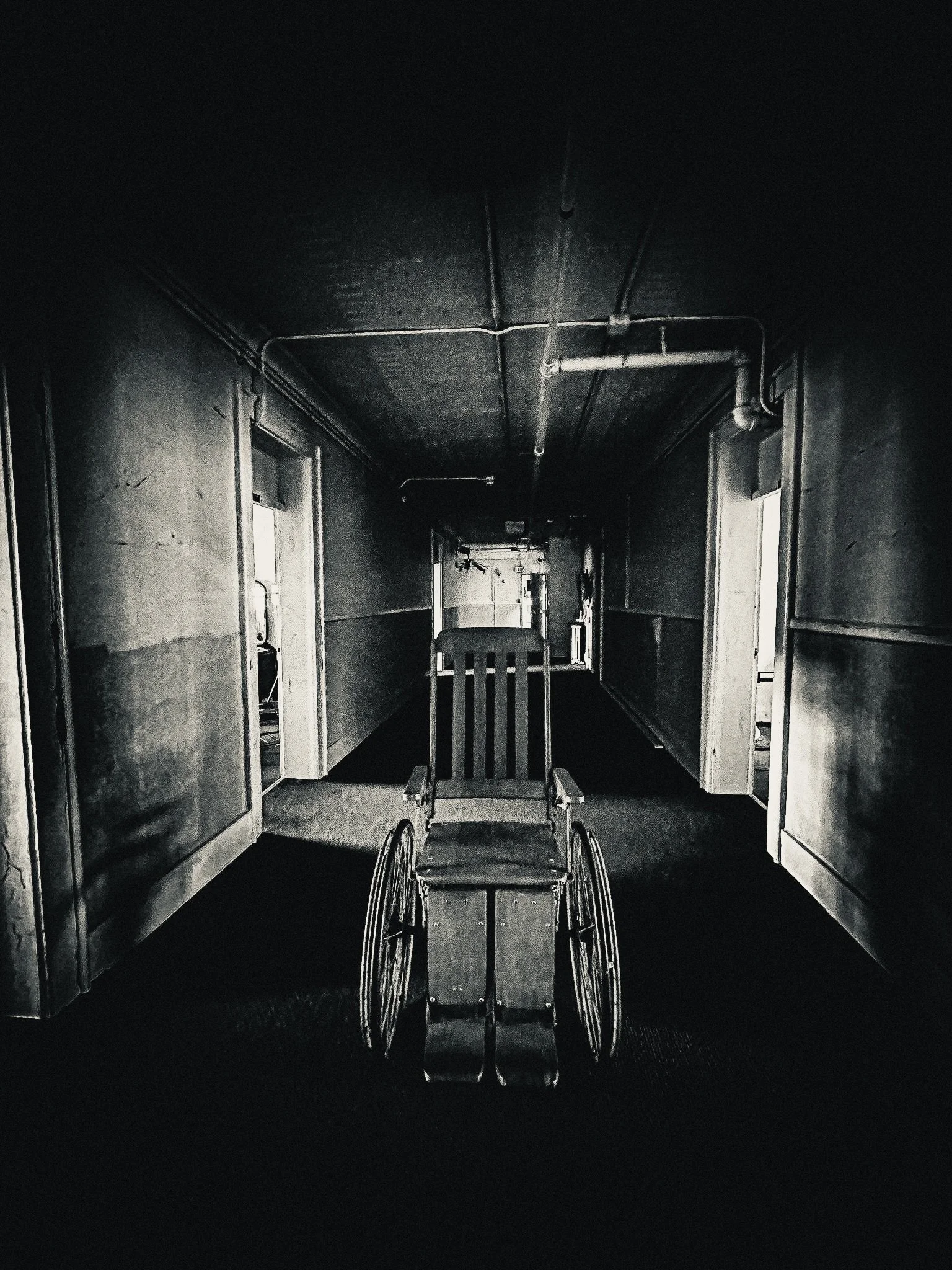Fairfield County Infirmary





























Event Time: 8:30pm until 4am
Ticket Price: $129 Per Person
Get Ready For A Chilling Diagnosis
FAIRFIELD INFIRMARY: Where the Discharge Papers Were Never Filed.
Ready yourself for a late-night consultation where the atmosphere is thick with dread. Sign up for an exclusive, intense overnight probe inside the dilapidated wards of the Fairfield County Infirmary, a gothic relic where dark silhouettes glide and the murmurs of pain remain audible.
This place was the last resort for the sick and the destitute. Its heavy, weathered stones hold the tangible remnants of lives spent in sorrow, a potent reservoir of human anguish. We promise you'll find more than just dust: hear the unattached voices, witness the skittish, darting darkness, and feel the bone-deep shivers that confirm you're not alone.
Can you handle a full shift in a location where the lingering connections to this world are stronger than the foundation?
SHARE ME:
History and Ghost Hunting Information
History & Paranormal
-
The dark heart of Lancaster, Ohio, is not the town square, but a heavy, brick structure set on the hill—a building with a history so long and sorrowful it has ceased to be mere architecture.
The story of the Fairfield County Infirmary is the story of a community’s unwanted, a chronicle etched into the soil where over 1,200 souls now rest in unmarked ground.
The institution's life began simply and brutally in 1828 as a small, crude wooden structure: the poorhouse. It was built not out of charity, but necessity—a place to contain those deemed unable to support themselves.
Here, the destitute, the elderly, the sick, and the orphaned were gathered under one roof, replacing the colder, older system of simply auctioning off the poor to the cheapest bidder.
By 1840, the suffering outgrew the timber walls. The wooden shack was replaced by the substantial brick building that stands today, later expanded in 1865.
This wasn't just an institution; it was a self-sufficient, isolated world. It featured a vast farm that required the residents, or "paupers" as the records called them, to work until their bodies gave out.
For a century and a half, the Infirmary was the final home for the most vulnerable in the county, a desperate mix of people with no other recourse.
Many were elderly individuals who had no family or means of support; the infirmary was their final home, a place to live out their last years.
Before proper psychiatric hospitals, the mentally ill were often confined here in wards specifically for the "insane," where they were often isolated and subjected to rudimentary and often inhumane treatments.
The infirmary housed orphaned children who had no other place to go, providing basic care until they could be placed with foster families or find employment.
Women without family support who were pregnant, and those with diseases like tuberculosis and smallpox were also housed there, isolated from the rest of society.
Life inside was harsh. At its peak in 1903, the Infirmary was grossly overcrowded, and records from its early decades detail repeated instances of mistreatment and abuse by the very staff sworn to care for them.
Progress was glacially slow; it took until 1917 for the building to get gas lines, and the luxury of indoor plumbing wasn’t installed until 1926. Electricity didn't arrive until 1958, leaving generations to live and die in near darkness.
But the most somber chapter is written not in brick, but in earth. The Infirmary’s grounds contain the final resting place for over 1,200 people.
These were the graves of the forgotten, buried without dignity. Most were marked only with simple fieldstones or wooden planks that have long since been swallowed by the soil.
Today, the cemetery is just an ordinary field, the true measure of its history marked only by the grand monuments of the early superintendents—a chilling contrast to the vast, unnamed population sleeping beneath the grass.
The need for the poorhouse eventually dwindled with the rise of social safety nets. In May 1985, the last 16 residents were moved out, and the massive building closed its institutional doors for good.
After a brief, strange period as sterile county offices (renamed the Clarence E. Miller Building), it was finally vacated in 2013, left cold and empty until a private owner purchased it to preserve its chilling history—and the echoes of the desperate lives that can still be heard within its heavy, unforgiving walls.
-
The heavy brick structure of the Fairfield County Infirmary is not merely old; it is a live electrical conduit for torment, where the sorrows of the forgotten have coalesced into active, haunting presences. For those who dare to enter, the past is not a memory—it is a horrifying, living resident.
Apparitions That Refuse to Rest
The spirits of the Infirmary's lost residents do not merely linger; they walk the halls with chilling purpose. Visitors have recounted countless, indelible encounters with apparitions, each one a figure tied to a specific, tragic end.
On the upper floors, where the air grows thin and cold, a fragile, luminous figure known as the "Woman in White" is often observed drifting aimlessly. She is believed to be the ghost of a patient who succumbed to a painful, lingering illness, her spirit forever moving from room to room, searching for a physical relief that never came.
The quiet, echoing spaces of the old nursery and orphanage, however, are the most heart-wrenching. Here, the emptiness is often shattered by the sound of children's laughter and the distinct pitter-patter of tiny, spectral feet, sounds that abruptly collapse into an unnatural silence.
Investigators in these areas have repeatedly reported the sensation of a small, cold hand reaching out to grasp theirs in the absolute darkness.
Beneath the main floor, in the oppressive silence of the subterranean levels, an intense, malevolent presence holds court. It is widely said to be the ghost of a brutal caretaker from the past.
Visitors to this area are instantly enveloped by an unshakeable sense of dread and have even reported being violently shoved or pushed by an unseen, enraged force.
The Voices of the Forgotten
The most unsettling aspect of the Infirmary is its profound refusal to remain silent.
The air itself seems to crackle with the voices of the dead, captured by investigators as chilling Electronic Voice Phenomena (EVPs). Whispered pleas, mournful sighs, and even guttural screams defy all logical explanation, forming a terrifying dialogue from a place between worlds.
Recordings are riddled with clear, chilling declarations, including simple, hostile commands like "Get out" and desperate, drawn-out calls for "Help me."
The sheer volume of these experiences—the sudden, paralyzing cold spots that steal your breath, the fleeting, dark shadows that dart just at the edge of your vision, and the unnerving, total sensation of being watched—has cemented the Fairfield County Infirmary’s reputation. It is a terrifying magnet where the past is not merely remembered; it is actively, terrifyingly alive.
What Awaits You & What’s Included
-
Your intense overnight experience includes exclusive access to the Infirmary’s most active areas, hands-on training with ghost hunting equipment led by experienced investigators in small groups, dedicated free time for private exploration, a deep dive into the site's history, and provided refreshments and comfort breaks.
-
Dates Available
Various Dates (Check website for specific availability)
Time 8:30 PM – 4:00 AM (Please arrive by 8:15 PM for registration)
Location
Fairfield County Infirmary, 1587 Granville Pike, Lancaster, OH 43130, United States
Tickets $129 per person (Limited spaces available—book early to avoid disappointment!)
Age Restriction18+ only unless accompanied by an adult


